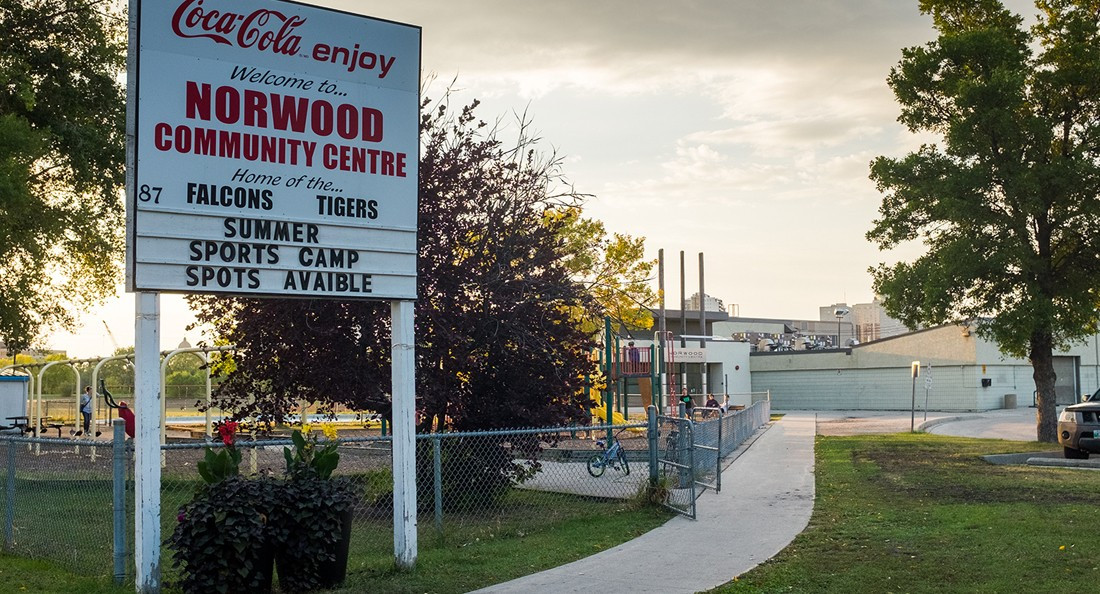Councillors comment on community centre crises
Citizens are rallying around their community amenities
Winnipeg’s aging recreational infrastructure has been a hot topic over the summer. As awareness of aging public facilities and community centres grows, those voting in the upcoming City election may want to review their candidates’ platforms with an eye for infrastructure-spending language.
Coun. Mike Pagtakhan, chairperson for the City of Winnipeg’s Standing Policy Committee for Protection, Community Services and Parks, says since “many of (the centres) were built during the centennial of the city, which was around 1970,” it’s important to assess whether they’re able to meet new demands and function safely.
“I’d say there’s assessments that are required in the community centres to bring them up to the standard. So over time, the mechanical systems of the community centres are going to need attention, from the electrical to the heating and cooling, to things like kitchen upgrades,” Pagtakhan says.
“Some of the new community centres that are popping up do have those built in, but some of the older ones, they’re needing that extra love and investment from the City.”
Pagtakhan says the City is undertaking a study under the Winnipeg Recreation and Parks Strategies, which will evaluate whether existing facilities meet community needs.
Coun. Matt Allard has been mitigating between community desires to conserve their amenities and City concerns about the cost of maintaining aging infrastructure. As the councillor for St. Boniface, Allard says he worked closely with the residents of Norwood, especially the Save Norwood Pool Committee.
While the pool faces a serious structural issue, during the first meeting, “it was clear that the people in the room wanted to work on saving the pool,” Allard says. “At this point what we are pursuing as a committee and me as a councillor is asking the City administration to see if there is a capital fix, so like a one-time fix to the pool.”
Both councillors advise citizens to consider candidates' taxation platforms when voting in the upcoming municipal election, because taxation regimes determine spending for these kinds of facilities, and Winnipeg has historically had extremely low property taxes.
Pagtakhan says that citizens “should be looking for candidates who are supporting reinvestment into our community centres” through the creation of a tax regime that supports those facilities.
Allard suggests even then, increased taxes may not immediately be able to conserve community recreational facilities.
“Mayor Bowman promised basically tax increases at inflation, and we’ve raised property taxes 2.33 per cent, I think every budget year for this council term, but all that money is directly reinvested for roads, .33 per cent to rapid transit. So the reality for the City is that every year we’re looking at a less and less big share of the taxation pie, and our costs keep going up,” Allard says.
Pagtakhan had a different takeaway from this tax increase. The rapid transit budget plan, which involved an increase directly connected to the development of rapid transit, was well received by the public, which Pagtakhan says indicates that “citizens want a transparent tax regime where they actually know what the leaders of City Hall are going to be doing with the tax increase.”
Pagtakhan suggests council should consider a similar approach for community centres. Choosing an appropriate increase amount and being clear about how that tax money would be distributed means citizens could be assured that their taxes would be spent in a way that directly benefits their communities.
“All these questions are coming together,” Pagtakhan says, “because community centres, they’re so important to our city. They help create a vibrant city, they help create a happy city, a healthy city.”
Published in Volume 73, Number 2 of The Uniter (September 13, 2018)







